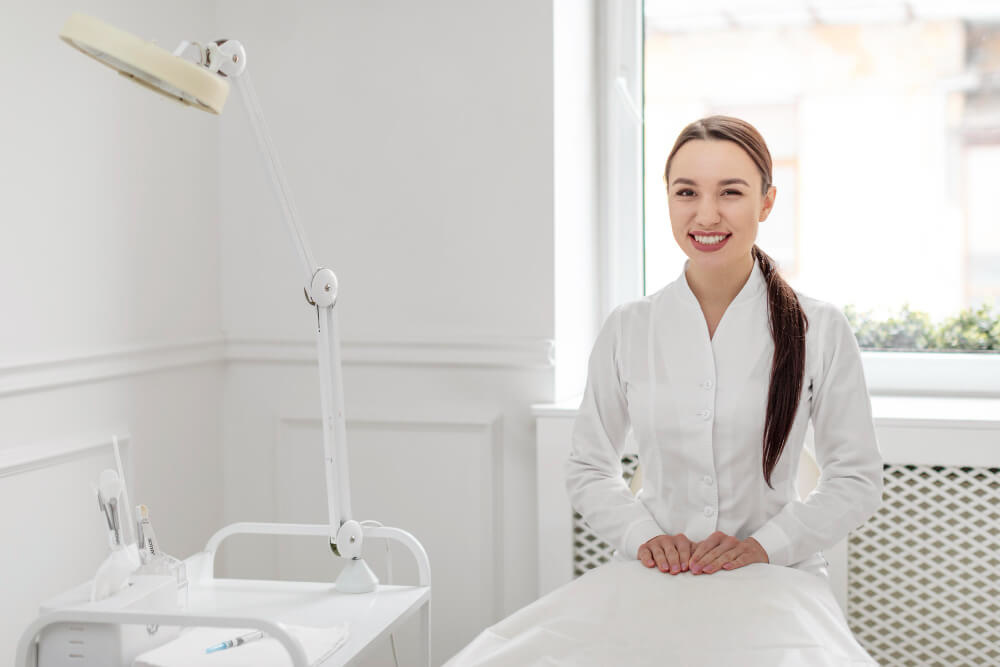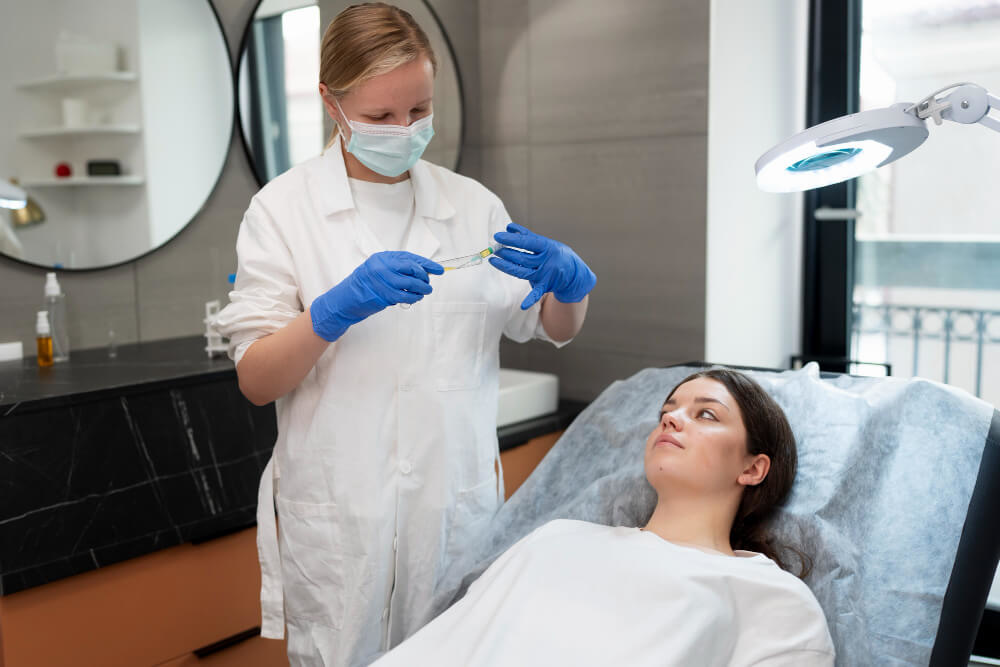The Ultimate Guide to Preventative Care: Living Longer and Healthier
For decades, our approach to health has often been reactive. We wait for symptoms to appear, for a diagnosis to be made, and then we seek treatment. This model, often called ‘sick care’, focuses on managing illness after it has already taken hold. But what if we could shift our focus from treating sickness to actively cultivating wellness?
This is the fundamental promise of preventative care. It is a proactive, forward-thinking approach to your health that prioritizes preventing disease before it starts. By understanding your unique risks and making conscious choices, you can dramatically influence not just your lifespan, but your healthspan, the years you live in vibrant, active health. Embracing preventative care is about taking control of your health narrative and investing in a future with more vitality and fewer limitations.
This powerful strategy is not about a single magic pill but a comprehensive lifestyle. It involves a partnership between you and your healthcare team to identify potential issues early, manage risks, and build a foundation of health that can last a lifetime. It is the art and science of staying well.

What Exactly is Preventative Care?
At its core, preventative care is any action you take to lower your chances of getting sick. It is a broad concept that encompasses everything from your daily habits to sophisticated medical screenings. Instead of waiting for a problem to arise, you actively work to keep your body and mind in optimal condition.
Think of it like maintaining your car. You do not wait for the engine to seize before you change the oil. You perform regular maintenance to ensure it runs smoothly and to catch small issues before they become catastrophic failures. Your body deserves the same, if not more, diligent attention.
Preventative care is personalized. What works for one person may not be necessary for another. It considers your age, gender, family history, lifestyle, and genetic predispositions to create a tailored health strategy. It is about understanding your personal landscape of risk and opportunity.

What are the Levels of Prevention?
To better understand this approach, experts often categorize preventative measures into three distinct levels. Each level plays a crucial role at a different stage of a potential health issue.
Primary prevention is the most proactive form. Its goal is to prevent a disease or injury from ever occurring. This includes actions that are entirely within your control, such as eating a nutrient-dense diet, engaging in regular physical activity, and avoiding tobacco. Vaccinations are a classic example of primary prevention, as they protect you from infectious diseases before you are ever exposed.
Secondary prevention focuses on early detection. The goal is to identify a disease in its earliest, most treatable stages, often before any symptoms have appeared. This is where medical screenings are vital. Procedures like mammograms for breast cancer, colonoscopies for colorectal cancer, and regular blood pressure checks are all forms of secondary prevention. They can halt or slow the progression of a condition, leading to better outcomes.
Tertiary prevention comes into play once a disease has been diagnosed. The objective here is to manage the condition to prevent complications, slow its progression, and improve the patient’s quality of life. This includes rehabilitation programs like cardiac rehab after a heart attack, careful blood sugar management for a person with diabetes, or support groups for managing a chronic condition.

Why is Preventative Care So Important for Longevity?
Longevity is not just about adding years to your life; it is about adding life to your years. Preventative care is the single most effective tool we have to achieve this goal. It directly targets the chronic diseases that are the leading causes of disability and premature death, such as heart disease, diabetes, stroke, and many cancers.
By focusing on prevention, you are actively increasing your healthspan. This means you are more likely to remain independent, energetic, and free from the burden of chronic illness as you age. It is the difference between simply existing in old age and truly living it to the fullest.
There is also a significant economic benefit. Preventing a disease is almost always less expensive than treating it. A healthy lifestyle and early screenings can help you avoid costly medications, complex surgeries, and long-term medical care down the road. It is a wise investment in both your physical and financial wellbeing.
Ultimately, preventative care is about empowerment. It puts you in the driver’s seat of your health journey. It transforms you from a passive recipient of medical care into an active participant in your own wellness, giving you the knowledge and tools to make informed decisions that will benefit you for decades to come.

What are the Core Pillars of a Preventative Lifestyle?
Building a life centered around prevention does not require a complete, overnight overhaul. It is about consistently practicing healthy habits that, over time, create a powerful defense against disease. These habits can be grouped into four main pillars that form the foundation of a long and healthy life.
Each pillar supports the others, creating a synergistic effect that enhances your overall resilience. Small, consistent efforts in each of these areas can lead to profound and lasting health benefits.

How Does Nutrition Impact Prevention?
What you eat is one of the most significant factors in disease prevention. The food you consume provides the raw materials your body needs for energy, repair, and defense. A diet rich in whole, unprocessed foods is paramount.
Focus on incorporating a wide variety of colorful fruits and vegetables, which are packed with vitamins, minerals, and antioxidants that fight cellular damage. Lean proteins, from sources like fish, poultry, beans, and lentils, are essential for muscle maintenance and repair. Healthy fats, found in avocados, nuts, seeds, and olive oil, support brain health and reduce inflammation.
Conversely, it is just as important to limit foods that promote disease. Highly processed foods, sugary drinks, and excessive amounts of saturated and trans fats can contribute to chronic inflammation, weight gain, and an increased risk of heart disease and diabetes. Hydration is also key; drinking plenty of water is crucial for nearly every bodily function.

What Role Does Physical Activity Play?
Movement is medicine. The human body is designed to be active, and a sedentary lifestyle is a major risk factor for numerous health problems. Regular physical activity is a cornerstone of preventative health.
The benefits are extensive. Cardiovascular exercise, like brisk walking, running, or cycling, strengthens your heart and improves circulation. Strength training builds and maintains muscle mass, which is vital for metabolism and stability as you age. Flexibility and balance exercises help prevent falls and injuries.
Aim for a combination of these activities throughout the week. Even small amounts of movement can make a big difference. Taking the stairs, going for a walk during your lunch break, or stretching while watching television are simple ways to integrate more activity into your day. Consistency is more important than intensity.

Why is Sleep a Critical Preventative Measure?
Sleep is not a luxury; it is a biological necessity. During sleep, your body undertakes critical repair and restoration processes that are essential for long-term health. Skimping on sleep can have serious consequences for your immune system, cognitive function, and metabolic health.
Chronic sleep deprivation is linked to an increased risk of obesity, type 2 diabetes, high blood pressure, and heart disease. It weakens your immune response, making you more susceptible to infections. It also impairs judgment, mood, and memory.
Prioritizing sleep is a powerful preventative strategy. Aim for 7 to 9 hours of quality sleep per night. Establish a regular sleep schedule, create a relaxing bedtime routine, and ensure your bedroom is dark, quiet, and cool. Avoiding caffeine and screens before bed can also significantly improve your ability to fall and stay asleep.

How Can Stress Management Prevent Illness?
In today’s fast-paced world, stress is a common experience. While short-term stress can be beneficial, chronic stress wreaks havoc on your body. It keeps your body in a constant state of ‘fight or flight’, leading to elevated levels of the stress hormone cortisol and widespread inflammation.
This chronic inflammatory state is a key driver of many diseases, including heart disease, autoimmune disorders, and mental health conditions like depression and anxiety. Learning to effectively manage stress is therefore a non-negotiable aspect of preventative care.
Techniques like mindfulness, meditation, and deep-breathing exercises can help calm your nervous system. Spending time in nature, engaging in hobbies you enjoy, and maintaining strong social connections are also powerful buffers against the negative effects of stress. Finding what works for you and practicing it regularly can protect both your mental and physical health.

What Medical Screenings Should I Know About?
While lifestyle is the foundation, regular medical screenings are the essential surveillance system of preventative care. These tests can detect potential problems long before you would notice them yourself, allowing for early and more effective intervention. The specific screenings you need depend on your age, sex, family history, and other risk factors.
It is crucial to have an open dialogue with your healthcare provider about which screenings are right for you. They can help you navigate the recommendations and create a personalized screening schedule. Adhering to guidelines from reputable organizations is key to ensuring you are getting the most appropriate care.
For instance, the recommendations provided by the U.S. Preventive Services Task Force are evidence-based and widely used by clinicians to guide screening decisions. These guidelines are regularly updated as new research becomes available.

What are Common Screenings for Adults?
Several screenings are standard for most adults. Regular blood pressure monitoring is vital, as high blood pressure often has no symptoms but is a major risk factor for heart attack and stroke. Cholesterol and lipid panels check for fats in your blood that can contribute to artery blockages.
Blood sugar tests, like a fasting glucose or A1c test, can screen for prediabetes and diabetes. Early detection can allow for lifestyle changes that may prevent or delay the onset of full-blown diabetes. Body Mass Index (BMI) and waist circumference measurements help assess for risks associated with being overweight or obese.
Cancer screenings are also a critical component. These may include mammograms for breast cancer, Pap tests for cervical cancer, colonoscopies for colorectal cancer, and discussions about PSA testing for prostate cancer. The timing and frequency of these tests are based on age and individual risk.

How is Cardiovascular Health Assessed?
Heart disease remains a leading cause of death, but our ability to assess risk has become increasingly sophisticated. While standard cholesterol tests are important, they do not always tell the whole story. Many forward-thinking clinicians are now using more detailed assessments to get a clearer picture of a patient’s cardiovascular health.
A more comprehensive evaluation might include an advanced cardiovascular risk assessment in primary care. This can involve tests for specific lipoprotein particles, markers of inflammation like hs-CRP, and even imaging tests like a coronary artery calcium (CAC) score, which measures plaque buildup in the heart’s arteries.
These advanced diagnostics help identify at-risk individuals who might be missed by traditional screening methods. They allow for more aggressive and personalized preventative strategies, such as targeted lifestyle interventions or medication. Following the latest American Heart Association guidelines helps ensure that both clinicians and patients are making the most informed decisions about heart health.

Who are the Key Professionals in a Preventative Care Team?
Your preventative care journey is not one you have to take alone. A team of dedicated professionals can provide the expertise, guidance, and support you need to achieve your health goals. Building a strong relationship with this team is a key step towards a longer, healthier life.

What is the Role of a Primary Care Physician?
Your primary care physician (PCP) is typically the captain of your healthcare team. They serve as your main point of contact for all your health needs, providing continuity of care over many years. Your PCP performs your annual physicals, orders necessary screenings, and helps you interpret the results.
They have a comprehensive view of your overall health, medical history, and risk factors. This unique perspective allows them to coordinate your care, make referrals to specialists when needed, and help you manage any chronic conditions that may arise. A strong, trusting relationship with your PCP is invaluable.

How Can a Health Coach Support My Goals?
Knowing what to do is one thing; actually doing it is another. This is where a health and wellness coach can be a game-changer. These professionals are experts in behavior change, helping you bridge the gap between your intentions and your actions.
A certified coach can help you set realistic goals, identify and overcome barriers, and stay motivated on your journey. They provide accountability and support, empowering you to make sustainable lifestyle changes. The National Board for Health & Wellness Coaching is the leading certifying body, ensuring coaches meet high standards of practice.

What is a Preventative Medicine Specialist?
For those seeking an even deeper focus on prevention, a preventative medicine specialist can be an excellent resource. These are physicians who have completed specialized training and residency programs focused on public health and clinical preventative medicine.
They possess an expert understanding of biostatistics, epidemiology, and health services management. These specialists are uniquely equipped to design and implement comprehensive prevention strategies for both individuals and populations. You can find qualified specialists through organizations like The American Board of Preventive Medicine, which certifies physicians in this critical field.

How is the Healthcare System Adapting to Preventative Care?
The healthcare landscape is slowly but surely evolving to better support preventative health. There is a growing recognition that the old ‘sick care’ model is unsustainable and that a focus on wellness and prevention leads to better outcomes for patients and lower costs for the system as a whole.
This shift is leading to the emergence of new and innovative practice types. Concierge and direct primary care models, for example, allow physicians to spend more time with each patient, focusing on comprehensive, preventative strategies rather than just acute problems. Longevity-focused clinics are also gaining popularity, offering cutting-edge diagnostics and therapies aimed at extending healthspan.
Of course, this evolution presents new challenges and opportunities. Innovative business models for a preventative care practice are required to make these services accessible and sustainable. Clinicians and practice managers must navigate a complex landscape to ensure they can provide high-quality preventative services while running a viable operation.
Furthermore, the financial side can be complex. Understanding the nuances of insurance reimbursement and patient payment is crucial for success in this emerging field. Mastering the specifics of billing, coding, and pricing for longevity medicine is essential for any practice looking to specialize in proactive, preventative health.

How Can I Start My Own Preventative Care Journey?
Getting started with preventative care is less daunting than it might seem. It begins with a single decision to be more proactive about your health. From there, you can take small, manageable steps to build momentum.

What is the First Step?
The most important first step is to connect with a primary care provider. Schedule a comprehensive physical or wellness visit. Use this appointment to discuss your health goals, review your family history, and ask questions about which screenings and lifestyle changes are most important for you.

How Can I Make Small, Sustainable Changes?
Trying to change everything at once is a recipe for failure. Instead, focus on making one or two small changes at a time. Maybe you start by adding a 20-minute walk to your daily routine or replacing one sugary soda with a glass of water. Once that habit is established, you can build on it by adding another small change. This incremental approach is far more sustainable and effective in the long run.

Where Can I Find Reliable Information?
In an age of information overload, it is vital to rely on credible sources. Your healthcare team should be your primary source of information and guidance. For further learning, look to reputable organizations, medical institutions, and government health agencies. Be skeptical of claims that sound too good to be true and always discuss new ideas with your doctor before implementing them.
Preventative care is the ultimate expression of self-care. It is an ongoing, lifelong investment in your most valuable asset: your health. By embracing a proactive mindset and making conscious choices every day, you are not just preventing disease, you are building a future filled with more energy, clarity, and joy.
Frequently Asked Questions

How does a proactive metabolic screening protocol differ from a standard annual physical?
While a standard annual physical provides a valuable health snapshot, it often focuses on basic markers to screen for established disease. A proactive metabolic health protocol is more comprehensive, utilizing advanced and sensitive biomarkers to detect subtle dysfunctions long before they become clinical problems. For instance, instead of just a standard cholesterol panel, this protocol may include an advanced lipid panel with particle size and count, as well as markers for insulin resistance like fasting insulin.
The primary goal of this proactive approach is optimization, not just the absence of disease. Standard tests often have wide "normal" ranges, whereas a proactive protocol interprets results based on optimal ranges for longevity and peak wellness. This allows for early and highly targeted interventions, such as specific nutritional adjustments or lifestyle changes, to reverse negative trends and build a more resilient metabolism.

When is the best time to start thinking about metabolic health screening if I don’t have any symptoms?
Proactive metabolic screening is most effective when started before any symptoms of metabolic dysfunction appear, as the goal is prevention. Many physicians recommend establishing a comprehensive baseline in your late 20s or early 30s, as this is when subtle metabolic shifts can begin due to lifestyle and environmental factors. An early baseline provides a crucial reference point to track changes over time and make informed health decisions throughout your life.
Even if you are young and feel healthy, certain factors may warrant earlier or more frequent screening. A family history of conditions like type 2 diabetes, heart disease, or polycystic ovary syndrome (PCOS) are significant indicators. This personalized approach ensures that you are addressing potential risks based on your unique genetic and lifestyle profile, rather than waiting for a one-size-fits-all age recommendation.

What are the typical next steps if my screening reveals metabolic health risks?
Receiving results that indicate metabolic health risks is not a diagnosis but rather a powerful opportunity for targeted intervention. The first step is a detailed consultation with your physician to review the findings in the context of your complete health profile, including diet, exercise, stress, and family history. This conversation is key to understanding the root causes of the imbalances and co-creating a personalized plan.
This action plan will be evidence-based and focus on precise, manageable changes rather than generic advice. It typically includes specific nutritional strategies, a tailored exercise prescription designed to improve insulin sensitivity, and recommendations for sleep optimization and stress management. Follow-up testing is then scheduled at appropriate intervals to monitor progress, ensuring the interventions are effective and can be adjusted as your health improves.
Discover the most comprehensive functional medicine training, longevity training, and biohacking certification programs designed specifically for healthcare professionals, medics, and clinic owners who want to master regenerative medicine protocols and anti-aging therapies. Take control with Talking Longevity.







